Trump Tariffs Update: SCOTUS, New Levies and What's Ahead
Donald Trump continues to use tariffs as a central tool of his trade policy. Here’s where his tariffs stand now.

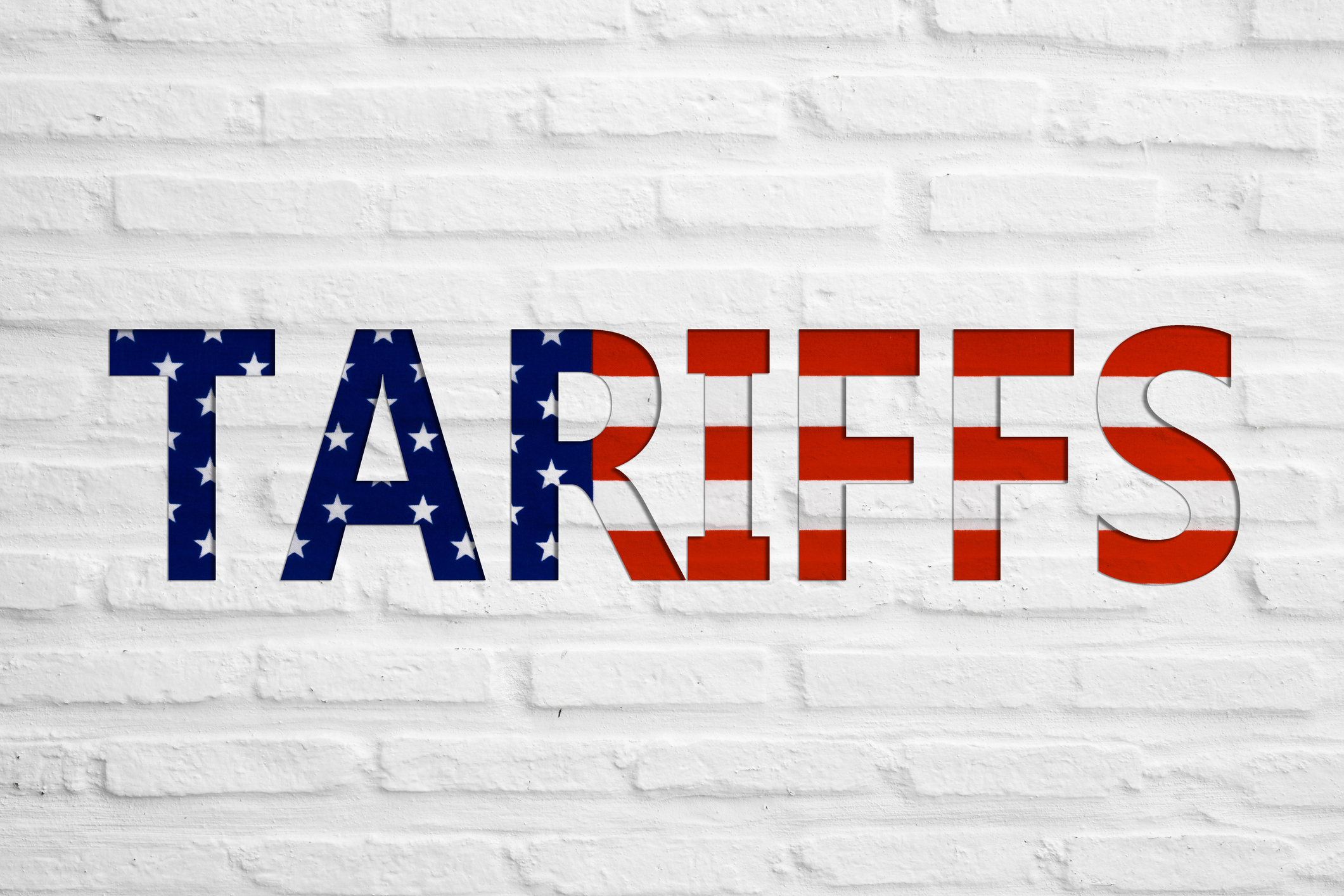
You've probably noticed that tariffs remain a core part of President Donald Trump's economic strategy with new announcements and revisions occuring frequently.
He argues that these taxes on imported goods and services are crucial for reducing the United States' trade deficit and enhancing U.S. manufacturing.
- Since early April, Trump has implemented or threatened sweeping tariffs on nearly all products from almost all countries. However, most were paused for 90 days on April 8, except for tariffs involving China.
- Trump recently announced a slew of new tariffs ranging up to 100% on everything from pharmaceuticals to kitchen cabinets and heavy-duty trucks. (More on that below.)
Meanwhile, many economists, former allies, and even some in his own party argue that Trump’s tariff policies will harm the U.S. economy by increasing costs for businesses and consumers, exacerbating inflation, and potentially slowing economic growth.
From just $107.88 $24.99 for Kiplinger Personal Finance
Become a smarter, better informed investor. Subscribe from just $107.88 $24.99, plus get up to 4 Special Issues

Sign up for Kiplinger’s Free Newsletters
Profit and prosper with the best of expert advice on investing, taxes, retirement, personal finance and more - straight to your e-mail.
Profit and prosper with the best of expert advice - straight to your e-mail.
For example, in a CBS interview, investor and philanthropist Warren Buffett described tariffs as "an act of war, to some degree."
Trump's former Vice President, Mike Pence, posted on X (formerly Twitter), describing the tariffs as "the largest peacetime tax hike in U.S. history."
Legal challenges have added to the volatility.
After two federal courts recently blocked some of Trump's tariffs. A federal circuit court of appeals ruled on August 29 that most of Trump's tariffs are illegal. The U.S. Supreme Court has agreed to expedite the case, with oral arguments scheduled for early November 5, 2025. (For more information, see: Are Trump's Tariffs Legal?)
It can be a lot to keep track of, to say the least.
So, here is more information about the various Trump tariffs, starting with the latest levies and news.
Overview
When did Trump's tariffs start?
Since taking office for a second term, Trump has threatened, implemented, or paused broad tariffs on various goods, including steel, aluminum, cars, and more.
Initially, the measures targeted countries like China and trading partner allies, including Canada and Mexico. However, Trump's most recent tariffs could ultimately impact nearly all countries.
Additionally, the inconsistent and historic nature of these tariff decisions has unsettled markets and caused confusion.
For example, on April 3, the U.S. stock market experienced its worst single-day decline since the pandemic during a sell-off following President Trump's tariff announcement. Wall Street began using the term "TACO trade" (Trump Always Chickens Out) to describe the on-and-off impacts of tariffs on the market.
The Trump administration recently announced several tariffs to take effect on Oct. 1.
Tariff Timeline
Here’s where things stand so far with Trump’s tariffs. (More detailed information on each is provided below.)
- November 5, 2025: The U.S. Supreme Court will hear oral arguments in the case challenging the legality of the President's sweeping reciprocal tariffs imposed under the International Emergency Economic Powers Act (IEEPA).
- November 2, 2025: Trump announced a preliminary trade agreement between the United States and China.
- November 1, 2025: An additional 25% tariff on imported medium- and heavy-duty trucks and their parts went into effect, bringing the total tariff to 50%.
- October 1: Trump announced upcoming/proposed tariffs on patented pharmaceutical drugs, 25% on heavy-duty trucks imported into the U.S., 50% on kitchen cabinets, bathroom vanities and related products, and 30% on upholstered furniture products.
- September 29: Trump announced a 100% tariff on movies made outside the U.S.
- September 9, 2025: SCOTUS agrees to fast-track the Trump tariff case to hear oral arguments in early November.
- August 29, 2025: The U.S. Court of Appeals for the Federal Circuit ruled that most of President Trump's "reciprocal tariffs" were illegal.
- August 17, 2025: A 50% tariff rate took effect on India.
- August 6, 2025: A new tariff rate of 50% imposed on Brazil went into effect.
- July 31, 2025: The U.S. Court of Appeals for the Federal Circuit heard oral arguments on the legality of Trump's use of the International Emergency Economic Powers Act (IEEPA) to impose tariffs.
- July 22, 2025: President Trump announced the trade agreement with Japan and suggested that a trade deal with the EU had also been reached.
- July 12, 2025: Trump announces 30% tariffs to be imposed on the EU and Mexico as of August 1.
- July 6, 2025: Treasury Secretary Scott Bessent announced that tariffs would revert to their previous levels (as of April 2) on August 1 for countries that had not reached new trade agreements.
- June 27, 2025: Trump announced he was cutting off trade talks with Canada and threatened new tariff rates on Canadian goods
- June 11, 2025: President Trump announced a trade deal with China: the existing 20% “fentanyl” and 10% “reciprocal” tariffs would remain, and higher tariffs were paused for 90 days
- June 10, 2025: The U.S. Court of Appeals for the Federal Circuit allowed Trump’s tariffs to remain in effect, after lower courts found them illegal. Oral arguments are scheduled for July 31.
- June 4, 2025: The U.S. increased tariffs on steel and aluminum imports from 25% to 50%, with exceptions for the UK.
- June 1, 2025: The Trump administration delayed a 50% reciprocal tariff on the European Union (EU) to July 9
- May 30, 2025: Trump announces a 50% tariff on imported steel, a 25% increase.
- May 29, 2025: After a second federal court ruled against Trump's tariffs, a federal appeals court stayed those rulings, leaving the tariffs in place pending further court review.
- May 28, 2025: The International Court of Trade pauses many of Trump's tariffs after ruling the president doesn't have the authority to impose them under the IEEPA.
- May 23, 2025: Trump threatens 50% EU tariff and 25% Apple tariff
- May 12, 2025: U.S. and China 90-day suspension of high retaliatory tariffs.
- May 8, 2025: Trump announces trade deal with the UK.
- May 4, 2025: Trump floats the idea of a 100% tariff on foreign-made films.
- April 29, 2025: Trump changes the rules surrounding tariffs on automobiles such that steel and aluminum tariffs don't stack on top of the 25% tariffs.
- April 23, 2025: Several states file a lawsuit against the Trump administration due to its tariff policies.
- April 12, 2025: US Customs and Border Protection notice temporarily exempts cell phones and some other electronics from the 145% tariffs
- April 10, 2025: The White House says the tariff rate for China is 145%.
- April 9, 2025: Higher "reciprocal" tariff rates for many countries were set to take effect, according to the White House. But the Trump administration says this now means 125% on Chinese imports and a 90-day pause for most other countries, set to expire on July 8.
- April 7, 2025: Trump threatens 50% tariffs on China
- April 5, 2025: U.S. 10% baseline tariffs go into effect against many countries.
- April 2, 2025: Trump's Tariff' Liberation Day": Trump announces sweeping tariffs on almost all countries at half the rate the administration claims they charge the U.S. Some Senate Republicans join Democrats in a vote designed to invalidate Trump's tariffs on Canada.
- March 26, 2025: President Trump announces a 25% tariff on almost all imported cars effective as of April 3, 2025, and on key auto parts planned for May 3.
- March 12, 2025: The U.S. announces Increased tariffs on steel and aluminum to 25% globally.
- March 4, 2025: Trump increased tariffs on Chinese imports to 20%. New reciprocal tariffs have since been imposed on China.
Key Developments
Trump global 'reciprocal tariffs'
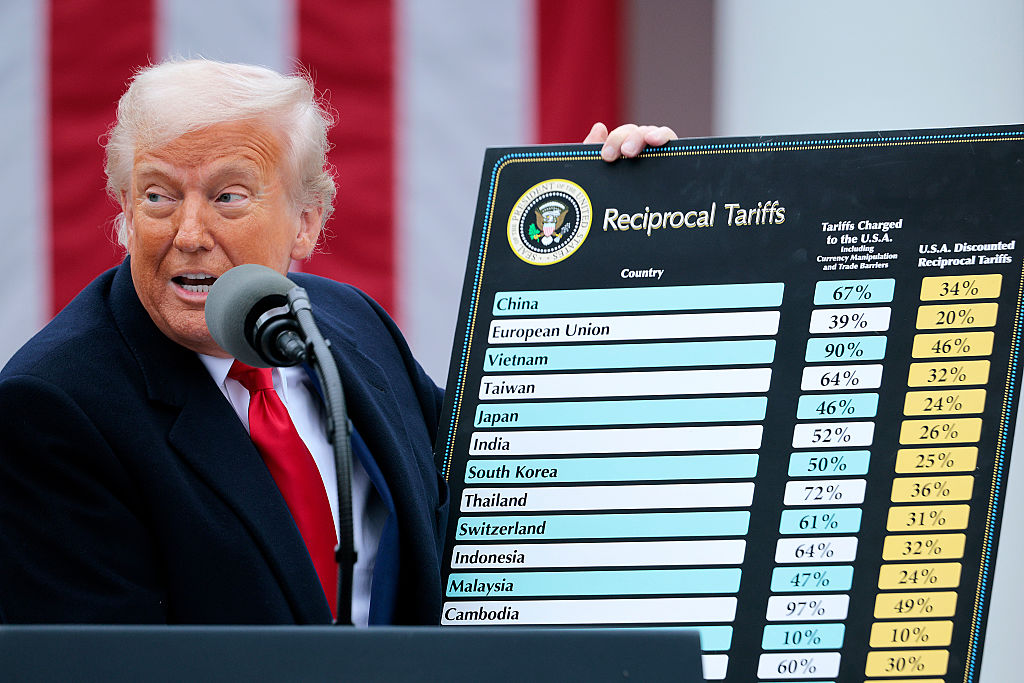
Much of the tariff confusion began when, in what he dubbed "Economic Independence Day," Donald Trump announced sweeping new reciprocal tariffs on almost all countries.
During an April 2 event in the White House Rose Garden, Trump held up a chart listing the countries, their tariff rates, and the proposed new U.S. tariff rate.
However, critics say that Trump's reciprocal tariff formula miscalculates by equating trade deficits with foreign tariff rates.
The argument is that this ignores global supply chains, currency dynamics, and consumer costs, while inviting damaging retaliation.
Supreme Court to hear Trump tariff case

Back in May, a three-judge panel at the U.S. Court of International Trade in Manhattan blocked former President Donald Trump’s sweeping “Liberation Day” tariffs, ruling that he overstepped his authority by imposing blanket tariffs on imports under emergency powers. Later that same week, the U.S. Court of Appeals for the Federal Circuit granted an administrative stay, temporarily blocking the injunctions and reinstating most of the tariffs while the legal battle continues.
Then, at the end of August, the U.S. Court of Appeals for the Federal Circuit struck down most of those tariffs. In a 7-4 decision, the court ruled that IEEPA doesn’t authorize the president to impose taxes or tariffs. However, the court left the tariffs in place to give the Trump administration time to appeal to the U.S. Supreme Court.
Now, the U.S. Supreme Court will hear oral arguments in the Trump tariff case appeal on November 5, 2025. So, all eyes will be on whether SCOTUS upholds the appellate ruling or agrees with Trump’s expansive view of executive power under the IEEPA.
A ruling from the Supreme Court will ideally not only decide the legality of these tariffs but also clarify the constitutional limits on presidential emergency powers.
This is a developing story.
China Trade Deal Framework Announced

The Trump administration recently announced a US-China trade deal framework, which seems to serve as a temporary trade truce.
The US has reportedly agreed to cut the tariff on fentanyl-related imports from China to 10% and to delay the full implementation of its higher "reciprocal" tariffs on China until November 2026.
In return, China reportedly agreed to suspend new export controls on rare earth materials and lift all retaliatory tariffs on U.S. agricultural products like soybeans.
This is a developing story.
Trump announces new tariffs on furniture, drugs, cabinets, and more

President Donald Trump announced a new set of significant tariffs to take effect on October 1, 2025. The key elements of these tariffs include:
- A 100% tariff on patented pharmaceutical drugs imported from abroad, unless the manufacturer is building or has under construction a manufacturing facility in the United States, to incentivize domestic drug production.
- 25% tariff on all heavy-duty trucks imported into the U.S. This tariff, according to Trump, is intended to protect American truck manufacturers facing foreign competition.
- 50% tariff on imported kitchen cabinets, bathroom vanities, and related products, targeting a key category of household goods mainly sourced from overseas.
- A 30% tariff on upholstered furniture imports, a move that will affect a significant segment of the furniture market, which has already experienced price increases due to past tariffs.
These tariffs are being imposed under Section 232 of the Trade Expansion Act of 1962, with the Trump administration citing national security concerns to bolster U.S. manufacturing and reduce dependency on foreign suppliers.
This is a developing story.
50% tariff rates imposed on India and Brazil
In August, the Trump administration imposed steep 50% tariffs on imports from India and Brazil.
Brazil's tariff increase took effect on Aug. 6, stacking a new 40% tariff on top of the pre-existing 10% baseline tariff.
Indian's tariffs doubled from 25% to 50% on August 27, 2025. Those tariffs target goods tied to its purchase of Russian oil.
Trump announces trade deals with Japan and the EU
In late July, President Trump announced a trade agreement with Japan under which Japanese exports to the United States will reportedly face a 15% tariff instead of the previously threatened 25% rate.
In return, Japan reportedly committed to investing $550 billion in the U.S., primarily directed toward revitalizing key American industries, including semiconductors, pharmaceuticals, energy, and steel.
The U.S. government would receive 90% of the profits from these investments.
Trump also signaled that a trade deal had been reached with the European Union, although the exact details of the EU agreement remain unclear.
The EU reportedly agreed to substantial investments in the U.S., significant purchases of American energy products, and arms acquisitions, while facing a 15% tariff on exports to the U.S.
This is a developing story.
Auto tariffs

Trump announced a 25% tariff on all imported cars and auto parts. On May 3, tariffs went into effect on key auto parts, e.g., engines, transmissions, and electrical systems.
To reduce the impact on domestic automakers, vehicles assembled in the U.S. are eligible for partial tariff rebates of 3.75% of the vehicle’s value in the first year and 2.5% in the second. Parts already subject to steel or aluminum tariffs are exempt from this new charge.
Vehicles and parts originating from Canada and Mexico that comply with the United States-Mexico-Canada Agreement (USMCA) will initially be exempt until a system is established to levy tariffs on non-U.S. components.
Additionally, Trump has recently hinted at upcoming tariffs targeting lumber, pharmaceuticals, and other sectors.
Trump steel tariffs
On May 30, 2025, at a U.S. Steel plant near Pittsburgh, Pennsylvania, former President Donald Trump announced plans to increase tariffs on imported steel from 25% to 50%, starting June 4.
He emphasized that the higher tariff would prevent any attempts to bypass the restrictions and aimed to bolster the American steel industry.
Retaliatory measures by trade partners
Though specific details on retaliation or trade agreement announcements from global trading partners are developing.
Canada and Mexico are reportedly negotiating exemptions. Canada imposed a 25% tariff on U.S. automobiles.
Which tariffs were already paused by Trump?
On April 9, before the various court rulings, the Trump administration had temporarily suspended most new import duties for 90 days. (The 25% tariffs on some Canadian and Mexican goods, plus automobiles and imported steel and aluminum, are in place.)
The 90-day pause on reciprocal tariffs initially set to expire on July 8, 2025, was moved to August 1.
More Tariff News
30% tariffs on EU and Mexico?
On July 12, President Trump indicated that the United States would begin enforcing a 30% tariff on goods coming from both the European Union and Mexico as of August 1.
President Trump made this announcement via letters posted on his social media, pointing to ongoing trade deficits with the EU and concerns about fentanyl entering the country from Mexico.
He also indicated that if either the EU or Mexico responds with their own trade measures, the U.S. may consider raising tariffs further.
This is a developing story.
Trump EU and Apple tariff threats
On May 23, President Trump announced plans to impose a 50% tariff on all imports from the European Union starting June 1, 2025.
Trump cited frustration over stalled trade negotiations and what he describes as unfair trade barriers and practices by the EU.
Separately, on the same day, Trump warned that Apple would face a 25% tariff on its products unless it shifts iPhone manufacturing to the U.S.
No specific timeline was given for the potential action against Apple.
US and China tariff reduction
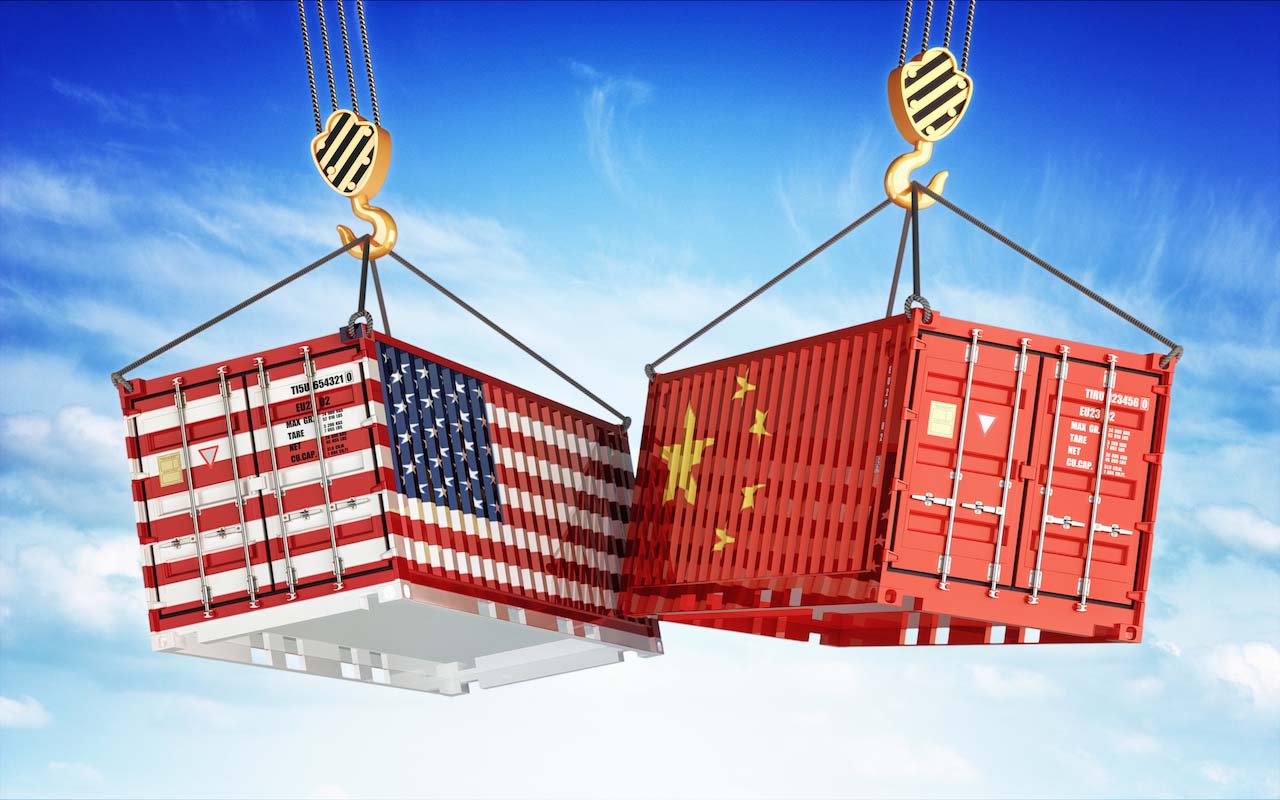
Update: The United States and China agreed to a 90-day suspension and reduction of tariffs as of May 12, 2025.
Trump trade framework with the UK
President Trump announced what he called a “landmark” trade deal with the United Kingdom on May 8, following a call with British Prime Minister Keir Starmer.
The agreement, which Trump described as “a fantastic win for American workers and British industry,” will see the U.S. lower tariffs on British steel, aluminum, and automobiles.
In return, the UK has agreed to purchase $10 billion worth of Boeing aircraft and open its market further to American agricultural exports, including beef and ethanol.
Movie tariffs?
On May 4, President Trump announced via social media that his administration would immediately imposea 100% tariff on any film made outside the U.S. and imported for American audiences. The announcement lacked specifics and hasn't come to fruition.
For more information, see our report: Will a New Trump Tariff Mean Higher Movie Ticket Prices in 2025?
Update: On September 29, 2025, in a social media post, Trump announced a 100% tariff on movies made outside the U.S. At this time, there are no further details, as this is a developing story.
Trump tariffs smartphones temporary exemption

The Trump administration temporarily exempted smartphones, laptops, and other electronics from its sweeping 145% tariffs on Chinese imports.
The decision, announced on April 12 by U.S. Customs and Border Protection (CBP), seems to spare critical tech products like semiconductors and flat-panel displays from high levies. The levies combine a baseline 20% tariff with a newly imposed 145% “reciprocal” tariff.
Republican push back against Trump tariffs
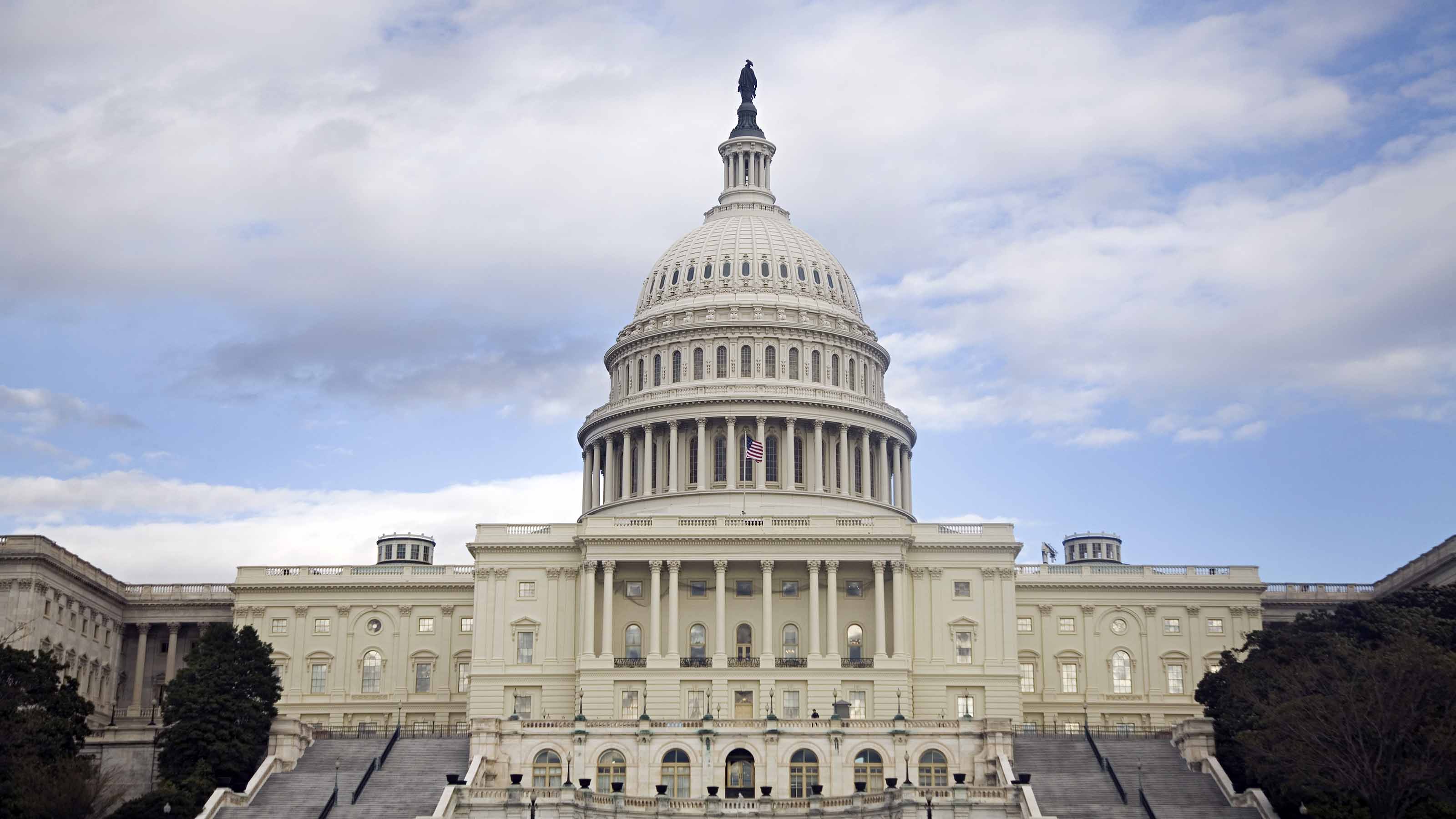
Meanwhile, some GOP lawmakers and other key voices have pushed back against Trump's tariffs.
In a CBS interview, investor and philanthropist Warren Buffett described tariffs as "an act of war, to some degree."
Trump's former Vice President, Mike Pence, posted on X (formerly Twitter), describing the tariffs as "the largest peacetime tax hike in U.S. history."
Four Republican senators joined Democratic Sen. Tim Kaine of Virginia's resolution to block Trump's tariffs on Canadian imports. In a 51-48 vote, the senators rejected the notion of a national emergency that Trump used to justify the tariffs. However, the resolution faces headwinds in the U.S. House of Representatives.
In a Fox Business interview, Sen. Ted Cruz (R-Texas) said, "I'm not a fan of tariffs," adding, "If the result is our trading partners jack up their tariffs and we have high tariffs everywhere, I think that is a bad outcome for America."
In an April interview, Sen. Rand Paul of Kentucky said, "I believe that economically, it's a misconception to think that tariffs will benefit the nation."
Tariff Product Breakdown
Here is an overview of significant tariffs currently implemented under President Trump's administration:
Trump tariffs in 2025
Category | Tariff Rate | Status |
|---|---|---|
General Imports (Most countries) | 10% | Baseline for most countries |
Steel and Aluminum | 50% | All countries, except some UK exemptions |
Auto and Auto Parts | 25% | All countries, with some USMCA/UK exemptions |
Copper | 50% (Aug 1) | All countries |
Pharmaceuticals | Up to 100% proposed | Not in effect (timeline unclear) |
| Row 5 - Cell 0 | Row 5 - Cell 1 | Row 5 - Cell 2 |
Tariff Impact
Economic impacts of Trump tariff policies: Groceries, Cars, Inflation
The economic consequences of Trump’s tariffs are becoming increasingly evident:
Automotive Industry: Some analysts estimate that the new auto tariffs could add $3,000 to the cost of U.S.-manufactured vehicles and $6,000 to those made in Canada or Mexico without exemptions. Production output could drop by as much as 30%, equating to a reduction of approximately 20,000 vehicles per day.
Inflation Concerns: Economists warn that higher tariffs could exacerbate inflation as manufacturers pass increased costs onto consumers.
As reported by Kiplinger, tariffs function as taxes on imports, which raise prices for goods like electronics, clothing, and food, disproportionately affecting lower-income households and reducing purchasing power.
According to the Yale Budget Lab, these higher costs could lead to slower GDP growth, with estimates suggesting a 0.6% reduction in 2025 and long-term economic losses equivalent to $80–110 billion a year.
Employment: While some sectors, like steel manufacturing, have seen job growth, others that rely on imported components face layoffs and reduced production capacity.
Additionally, some businesses are reportedly scaling back hiring and investment plans due to uncertainty and increased operational expenses.
Trade War: Bottom Line
Tariffs: What's next?
Here are some things to watch as the trade wars continue.
- The Trump administration may use tariff threats as leverage in bilateral talks with trading partners like Canada and Mexico under the USMCA framework and with other countries in hopes of negotiating individual trade deals.
- Industries like pharmaceuticals and lumber could face tariffs.
- Due to President Trump's tariff policies, U.S. consumers will face higher prices on a wide range of goods.
Automobiles may become significantly more expensive, with new car prices rising by thousands of dollars and repair costs increasing due to tariffs on imported parts.
Furniture, electronics, household items from China, fresh produce from Mexico, and steel-based products are also expected to see price hikes as import duties take hold.
These tariffs (and retaliatory measures expected from key trading partners) are also projected to contribute to inflation, making everyday goods more costly for U.S. households. Stay tuned.
This article has been updated to reflect recent announcements regarding Trump tariff poliy.
Related
- What Are Tariffs and Who Pays?
- Trump Tariffs on Canada, Mexico to Spike Food, Gas Prices
- Which States Will Be Hardest Hit By Trump's Tariffs?
Profit and prosper with the best of Kiplinger's advice on investing, taxes, retirement, personal finance and much more. Delivered daily. Enter your email in the box and click Sign Me Up.

Kelley R. Taylor is the senior tax editor at Kiplinger.com, where she breaks down federal and state tax rules and news to help readers navigate their finances with confidence. A corporate attorney and business journalist with more than 20 years of experience, Kelley has covered issues ranging from partnerships, carried interest, compensation and benefits, and tax‑exempt organizations to RMDs, capital gains taxes, and income tax brackets. Her award‑winning work has been featured in numerous national and specialty publications.
-
 Changes Are Coming for This Invesco Bond Fund
Changes Are Coming for This Invesco Bond FundThe Invesco BulletShares 2026 Corporate Bond ETF's bonds will mature in 2026. Here's what investors should do.
-
 What Science Reveals About Money and a Happy Retirement
What Science Reveals About Money and a Happy RetirementWhether you’re still planning or already retired, these research-based insights point the way to your best post-work life.
-
 7 Retirement Planning Trends: What They Mean for You in 2026
7 Retirement Planning Trends: What They Mean for You in 2026From government shutdowns to market swings, the past 12 months have been nothing if not eventful. The key trends can help you improve your own financial plan.
-
 Retirees in These 7 States Could Pay Less Property Taxes Next Year
Retirees in These 7 States Could Pay Less Property Taxes Next YearState Taxes Retirement property tax bills could be up to 65% cheaper for some older adults in 2026. Do you qualify?
-
 Estate Tax Quiz: Can You Pass the Test on the 40% Federal Rate?
Estate Tax Quiz: Can You Pass the Test on the 40% Federal Rate?Quiz How well do you know the new 2026 IRS rules for wealth transfer and the specific tax brackets that affect your heirs? Let's find out!
-
 'The 'Mamdani Effect' in New York: Can the City Afford a Millionaire Tax?
'The 'Mamdani Effect' in New York: Can the City Afford a Millionaire Tax?State Tax Will higher income taxes drive the wealthy to flee New York in 2026?
-
 Law Reversal Looming? Trump Eyes 2026 Gambling Winnings Tax Change
Law Reversal Looming? Trump Eyes 2026 Gambling Winnings Tax ChangeTax Deductions It's no secret that the IRS is coming after your gambling winnings in 2026. But how long will that last?
-
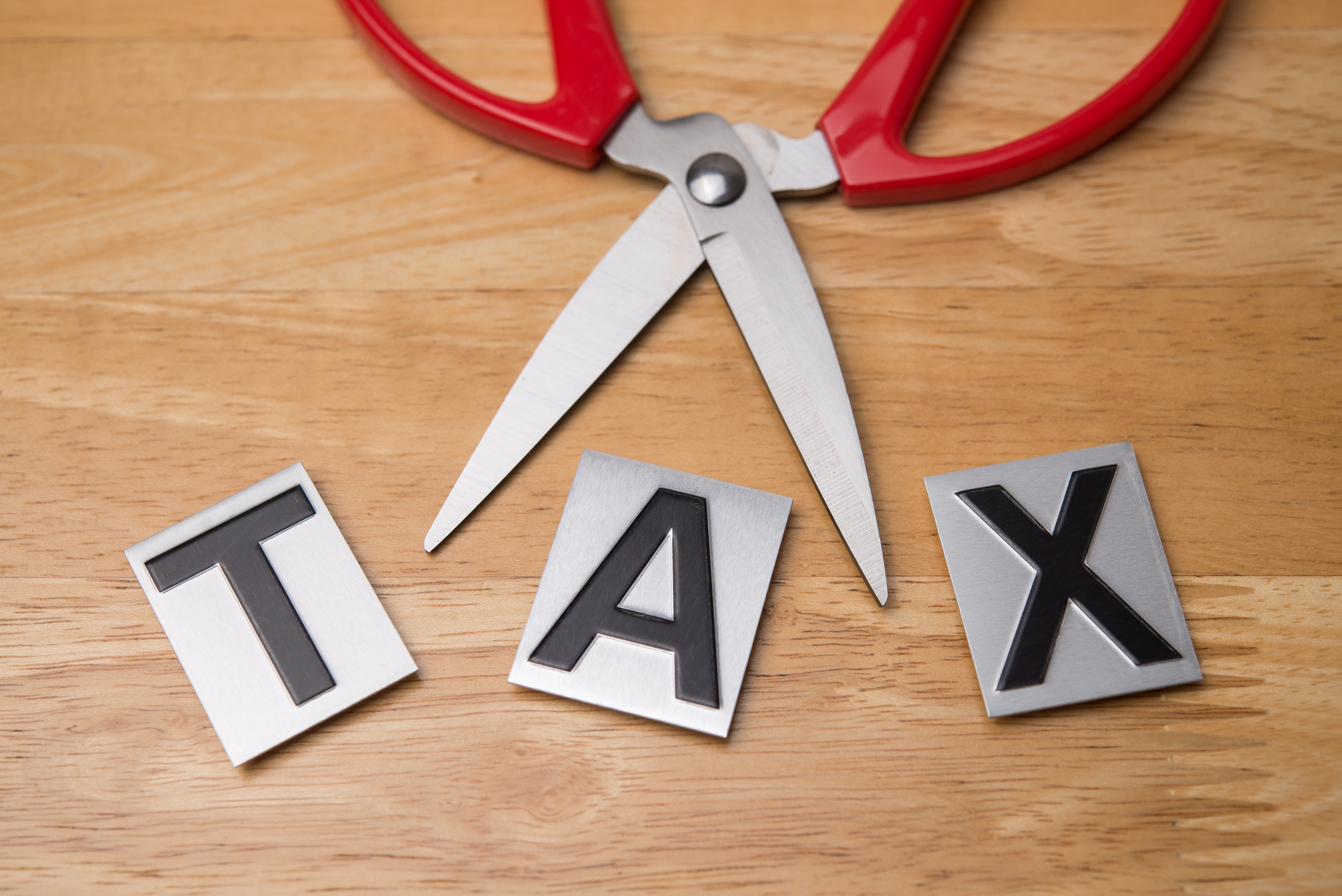 Trump's Plan to Eliminate Income Tax: 7 Things to Know Now
Trump's Plan to Eliminate Income Tax: 7 Things to Know NowTax Policy The potential consequences of eliminating taxes in favor of Trump tariffs could impact everything from inflation to Social Security and might give some U.S. taxpayers pause.
-
 5 Types of Gifts the IRS Won’t Tax: Even If They’re Big
5 Types of Gifts the IRS Won’t Tax: Even If They’re BigGift Tax Several categories of gifts don’t count toward annual gift tax limits. Here's what you need to know.
-
 The 'Scrooge' Strategy: How to Turn Your Old Junk Into a Tax Deduction
The 'Scrooge' Strategy: How to Turn Your Old Junk Into a Tax DeductionTax Deductions We break down the IRS rules for non-cash charitable contributions. Plus, here's a handy checklist before you donate to charity this year.
-
 IRS Says You Made a Tax Return Mistake? A New Law Could Help You Fight Back
IRS Says You Made a Tax Return Mistake? A New Law Could Help You Fight BackTax Law Updated taxpayer protections change what the IRS must explain on error notices and how long you have to respond.